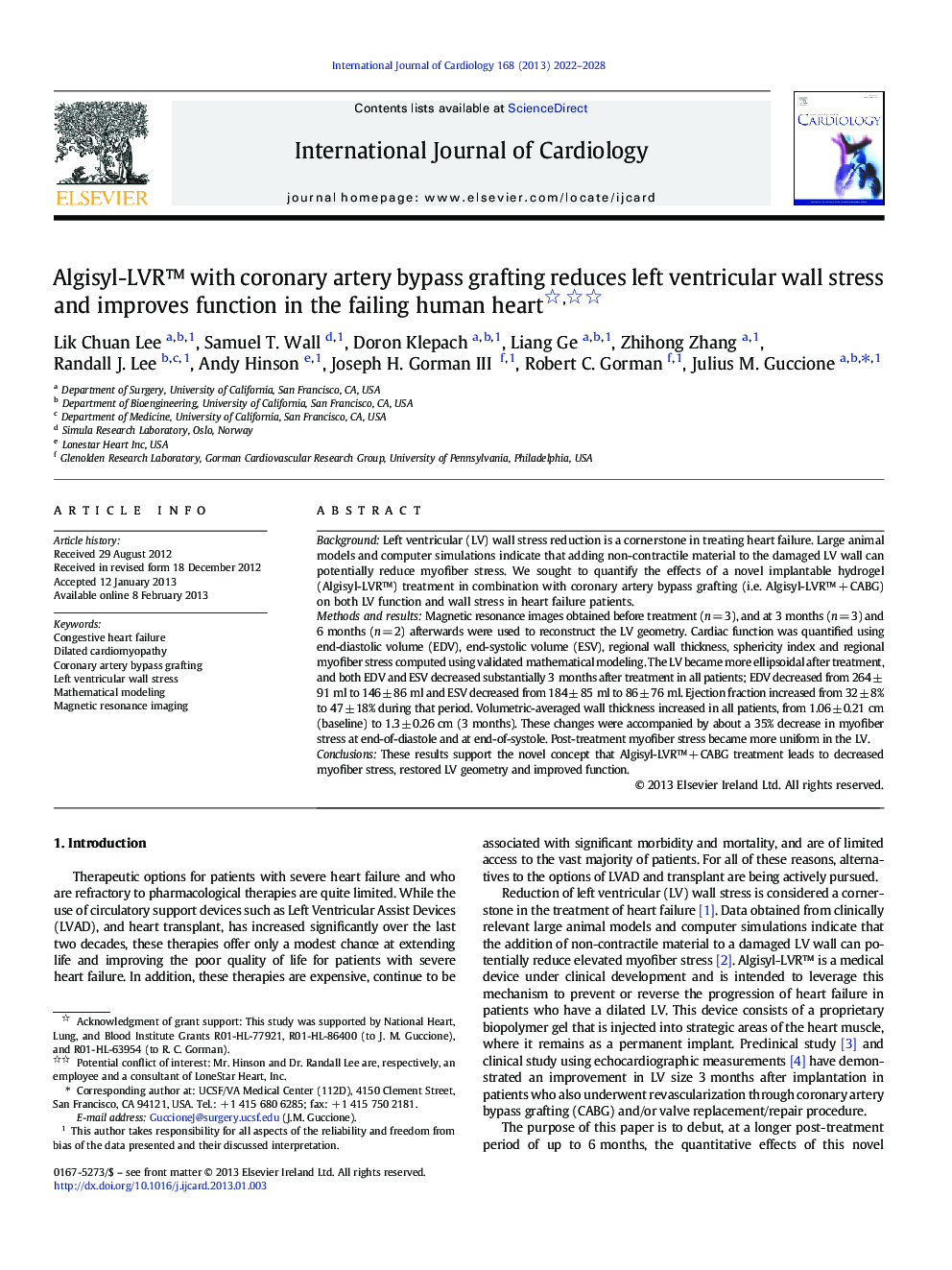| Article ID | Journal | Published Year | Pages | File Type |
|---|---|---|---|---|
| 5976178 | International Journal of Cardiology | 2013 | 7 Pages |
BackgroundLeft ventricular (LV) wall stress reduction is a cornerstone in treating heart failure. Large animal models and computer simulations indicate that adding non-contractile material to the damaged LV wall can potentially reduce myofiber stress. We sought to quantify the effects of a novel implantable hydrogel (Algisyl-LVRâ¢) treatment in combination with coronary artery bypass grafting (i.e. Algisyl-LVRâ¢Â + CABG) on both LV function and wall stress in heart failure patients.Methods and resultsMagnetic resonance images obtained before treatment (n = 3), and at 3 months (n = 3) and 6 months (n = 2) afterwards were used to reconstruct the LV geometry. Cardiac function was quantified using end-diastolic volume (EDV), end-systolic volume (ESV), regional wall thickness, sphericity index and regional myofiber stress computed using validated mathematical modeling. The LV became more ellipsoidal after treatment, and both EDV and ESV decreased substantially 3 months after treatment in all patients; EDV decreased from 264 ± 91 ml to 146 ± 86 ml and ESV decreased from 184 ± 85 ml to 86 ± 76 ml. Ejection fraction increased from 32 ± 8% to 47 ± 18% during that period. Volumetric-averaged wall thickness increased in all patients, from 1.06 ± 0.21 cm (baseline) to 1.3 ± 0.26 cm (3 months). These changes were accompanied by about a 35% decrease in myofiber stress at end-of-diastole and at end-of-systole. Post-treatment myofiber stress became more uniform in the LV.ConclusionsThese results support the novel concept that Algisyl-LVRâ¢Â + CABG treatment leads to decreased myofiber stress, restored LV geometry and improved function.
